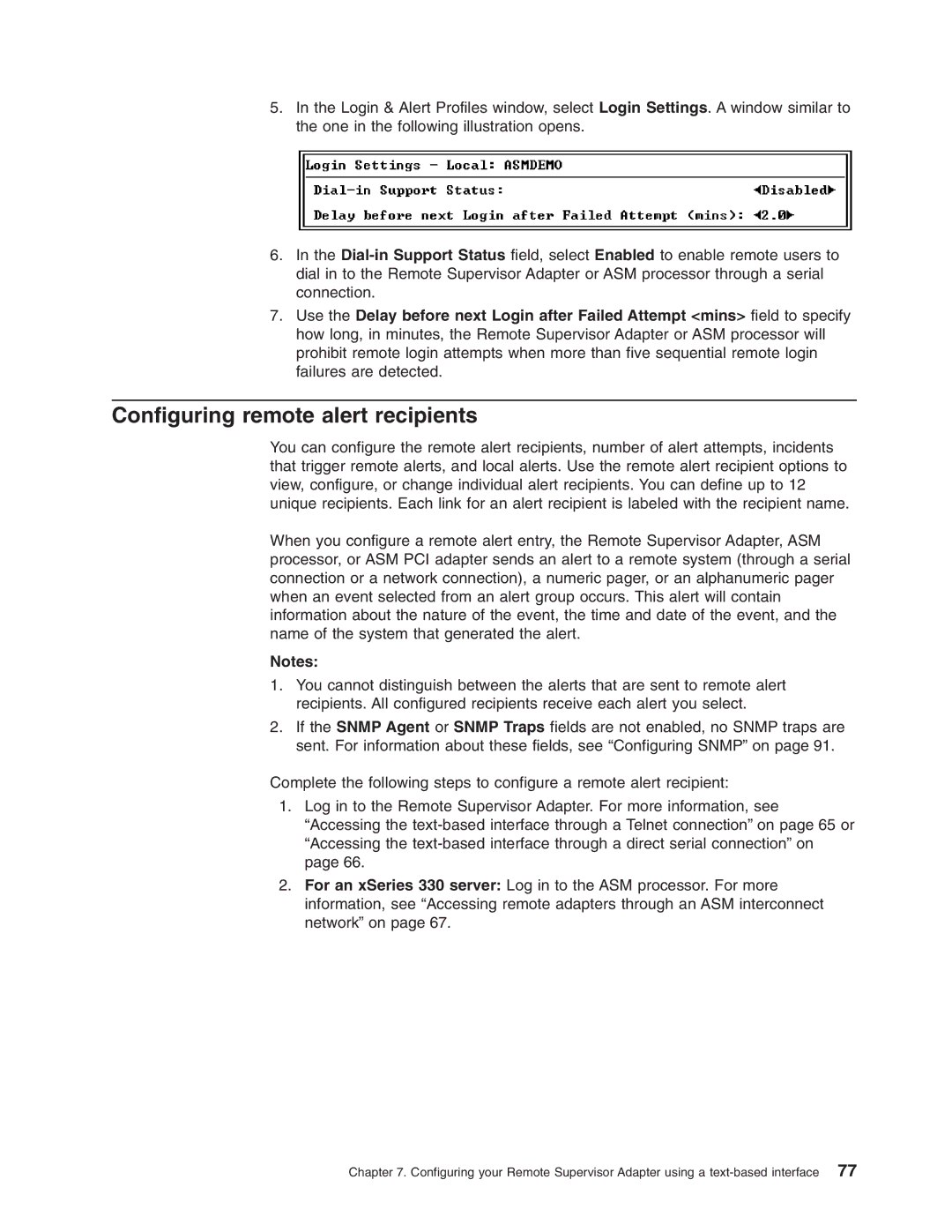
5.In the Login & Alert Profiles window, select Login Settings. A window similar to the one in the following illustration opens.
6.In the
7.Use the Delay before next Login after Failed Attempt <mins> field to specify how long, in minutes, the Remote Supervisor Adapter or ASM processor will prohibit remote login attempts when more than five sequential remote login failures are detected.
Configuring remote alert recipients
You can configure the remote alert recipients, number of alert attempts, incidents that trigger remote alerts, and local alerts. Use the remote alert recipient options to view, configure, or change individual alert recipients. You can define up to 12 unique recipients. Each link for an alert recipient is labeled with the recipient name.
When you configure a remote alert entry, the Remote Supervisor Adapter, ASM processor, or ASM PCI adapter sends an alert to a remote system (through a serial connection or a network connection), a numeric pager, or an alphanumeric pager when an event selected from an alert group occurs. This alert will contain information about the nature of the event, the time and date of the event, and the name of the system that generated the alert.
Notes:
1.You cannot distinguish between the alerts that are sent to remote alert recipients. All configured recipients receive each alert you select.
2.If the SNMP Agent or SNMP Traps fields are not enabled, no SNMP traps are sent. For information about these fields, see “Configuring SNMP” on page 91.
Complete the following steps to configure a remote alert recipient:
1.Log in to the Remote Supervisor Adapter. For more information, see “Accessing the
2.For an xSeries 330 server: Log in to the ASM processor. For more information, see “Accessing remote adapters through an ASM interconnect network” on page 67.
Chapter 7. Configuring your Remote Supervisor Adapter using a
